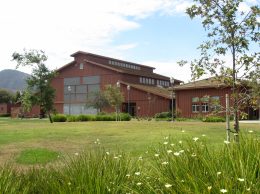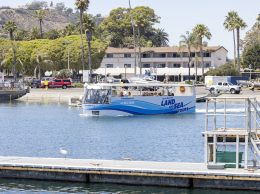Dubroff: COVID-19 is changing the course of global travel
Memorial Day is the traditional kick off to the summer tourism season on the Central Coast.
This year will be different. With airport schedules sharply curbed, cruise ships not sailing, entertainment venues shut and restaurants just figuring out what reopening will look like, the short-term looks pretty bleak.
As months progress and things get sorted out, there’s a tremendous amount of pent up demand for a getaway, particularly from greater Los Angeles and the Bay Area, where the Central Coast is very popular. Ditto the Central Valley, which loves to come to the coast to escape the heat.
But what the face of tourism looks like over the next year or so will be very different. That is in part because of the way the coronavirus pandemic has played a role in fracturing the global order — with deep ramifications for travel.
Just a few years ago, we were talking about the coming wave of Chinese tourists, thanks to its rising middle class, numbering in the hundreds of millions. For a select few, the tourist visa was a first step toward a property investment or business startup that could lead to a green card.
When it comes to Europe, summer getaways on the Central Coast were regular fare for Eurozone residents and students. And for our universities, the student visa was often a gateway for a family visit from abroad.
Australian and New Zealand residents loved the Central Coast for a counter-seasonal getaway and good surfing.
Those chains have now largely broken down. In a cover story on the future of globalization, The Economist speculates that in the future, tourism may be split into very separate zones.
One would be where the coronavirus is tolerated but contained, including Europe, the U.S. and parts of South America.
The second zone is one where COVID-19 is eliminated, with parts of Asia, Australia and New Zealand in the latter area.
People will have to quarantine for 14 days to cross zones and casual visits will be extremely rare.
So, we are due for an uncertain summer for tourism on the Central Coast, and an equally uncertain path forward as California begins to open up and beaches begin to fill.
One unexpected phenomenon is a surge in camping as people look for ways to self quarantine but also get out of the house for a bit. But until we reach the phase where larger gatherings can take place, there will not be nearly as much buzz about the region.
Two more things should be said about the future of tourism. First, the SoCal market can be a day trip market and that won’t help fill hotels, where luxury properties continue to be in demand, at least on the weekend.
Second, the toll that an off-summer or two for tourism has on the nonprofit community. The CASA Pacifica Wine Food & Brew fundraiser at CSU Channel Islands is a real moneymaker. Likewise, nonprofits count on Santa Barbara’s Fiesta and countless strawberry, lemon and avocado festivals to make money at the grass roots level.
The region will adapt to this brave new world of tourism. But increased global tensions and the stunning impact of the coronavirus pandemic will have a lasting impact.
ILLNESS WAS NOT COVID-19
A few weeks ago, I wrote about a strange illness that wreaked havoc in our offices in late January. I wondered if a test for antibodies would show anything after a family member, who was also sick earlier this year, turned up positive.
An opportunity came up to get a test at a Quest Diagnostics lab in a local hospital. I took the test and came back negative. The mystery continues.
• Contact Editor Henry Deubroff at [email protected].











